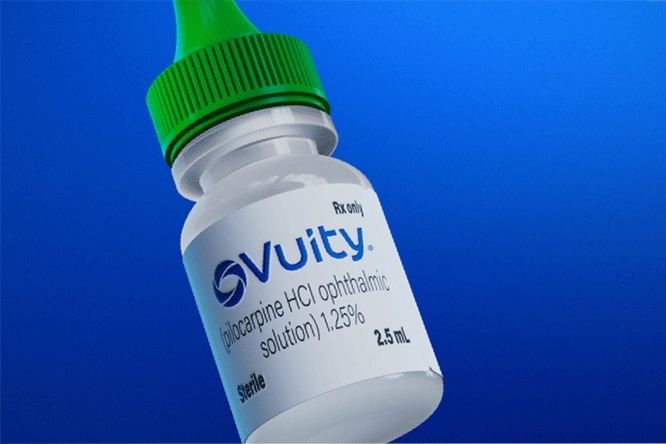
Hypocalcemia, characterized by abnormally low levels of calcium in the blood, is a critical electrolyte disturbance that can lead to a wide spectrum of clinical manifestations, ranging from subtle muscle cramps and paresthesias to life-threatening cardiac arrhythmias, seizures, and tetany. The precise regulation of serum calcium is vital for numerous physiological processes, including neuromuscular excitability, bone mineralization, blood coagulation, and cellular signaling. Effective management of hypocalcemia hinges upon accurately identifying its underlying etiology, which can include hypoparathyroidism, vitamin D deficiency, chronic kidney disease, magnesium deficiency, certain medications, and acute pancreatitis.
Calcium Supplementation: The Immediate and Long-Term Foundation
Calcium supplementation forms the cornerstone of hypocalcemia management, serving both acute, life-threatening scenarios and chronic maintenance.
A. Intravenous Calcium for Acute Hypocalcemia
For patients experiencing acute, severe, and symptomatic hypocalcemia (e.g., tetany, seizures, laryngospasm, QT prolongation, or cardiac compromise), prompt intravenous (IV) calcium administration is mandatory to rapidly restore serum calcium levels.
- Drugs:
- Calcium Gluconate: This is the preferred IV calcium salt due to its lower potential for local tissue irritation compared to calcium chloride. It provides 90 mg (4.65 mEq) of elemental calcium per 10 mL of a 10% solution.
- Calcium Chloride: Contains a higher concentration of elemental calcium (270 mg or 13.6 mEq per 10 mL of 10% solution) but carries a greater risk of tissue necrosis and extravasation if administered outside the vein. Its use is generally reserved for situations where large central venous access is available or in cardiac arrest scenarios.
- Clinical Uses:
- Emergency Treatment of Severe Symptomatic Hypocalcemia: Indicated for rapid correction when symptoms threaten vital functions.
- Acute Hypoparathyroidism: Following thyroidectomy or parathyroidectomy, where transient or permanent hypoparathyroidism can occur.
- Acute Pancreatitis: Where calcium can chelate with fatty acids, leading to severe hypocalcemia.
- Hyperkalemia-induced Cardiotoxicity: Calcium stabilizes cardiac cell membranes, counteracting the effects of high potassium.
- Adverse Effects:
- Hypercalcemia: Over-rapid infusion or excessive dosing can lead to iatrogenic hypercalcemia, causing nausea, vomiting, confusion, and cardiac arrhythmias.
- Cardiac Effects: Rapid IV administration can cause bradycardia, hypotension, and QT interval shortening. It should be given slowly (over 10-20 minutes).
- Local Irritation: Vein irritation, phlebitis, and tissue necrosis (especially with calcium chloride if extravasated).
- Drug Interactions: Can precipitate with bicarbonate-containing solutions and should be avoided in patients on digoxin due to increased risk of digitalis toxicity.
B. Oral Calcium for Chronic Hypocalcemia
For long-term management of chronic hypocalcemia or as follow-up to acute intravenous therapy, oral calcium supplements are essential.
- Drugs:
- Calcium Carbonate: The most common and inexpensive form, containing 40% elemental calcium. Requires an acidic environment for optimal absorption, thus best taken with meals.
- Calcium Citrate: Contains 21% elemental calcium but is well-absorbed even without stomach acid, making it suitable for patients on proton pump inhibitors or with achlorhydria.
- Calcium Lactate/Gluconate: Contain less elemental calcium (13% and 9%, respectively) and are typically used less frequently for chronic oral supplementation due to the need for larger pill burdens.
- Clinical Uses:
- Chronic Hypoparathyroidism: The primary long-term treatment, often combined with active vitamin D analogs.
- Vitamin D Deficiency: Used in conjunction with vitamin D repletion.
- Post-Surgical Hypocalcemia: Following parathyroid or thyroid surgery.
- Osteoporosis Prevention/Treatment: Although not specifically for hypocalcemia, it’s a common use.
- Adverse Effects:
- Gastrointestinal Disturbances: Constipation, bloating, gas, and nausea are common, particularly with calcium carbonate.
- Hypercalcemia: Chronic high-dose use, especially when combined with vitamin D, can lead to hypercalcemia, hypercalciuria, and increased risk of nephrolithiasis (kidney stones).
- Milk-Alkali Syndrome: A rare but serious condition caused by excessive intake of calcium and absorbable alkali (e.g., antacids), leading to hypercalcemia, metabolic alkalosis, and renal impairment.
- Drug Interactions: Can interfere with the absorption of certain medications, including iron supplements, thyroid hormones, and some antibiotics (tetracyclines, fluoroquinolones). Should be taken at separate times.
Vitamin D Analogs: Enhancing Calcium Absorption and Homeostasis
Vitamin D plays a crucial role in calcium homeostasis by promoting calcium absorption from the intestine and regulating its deposition in bone. Its deficiency is a common cause of hypocalcemia. Vitamin D supplements can be broadly categorized into parent vitamin D and its active metabolites.
A. Parent Vitamin D (Pro-hormones)
These forms require activation in the liver (25-hydroxylation) and kidneys (1-alpha-hydroxylation) to become calcitriol (1,25-dihydroxyvitamin D).
- Drugs:
- Cholecalciferol (Vitamin D3): Naturally produced in the skin upon sun exposure and found in some foods. It’s the preferred form for vitamin D repletion due to its longer half-life and potency.
- Ergocalciferol (Vitamin D2): Derived from plant sources and also requires hepatic and renal activation. Less potent than D3 in some studies, but clinically effective.
- Clinical Uses:
- Vitamin D Deficiency: The primary treatment for correcting hypocalcemia secondary to vitamin D deficiency.
- Secondary Hyperparathyroidism: Associated with chronic kidney disease (early stages) or vitamin D deficiency.
- Osteomalacia and Rickets: Conditions caused by inadequate mineralization of bone due to vitamin D deficiency.
- Adverse Effects:
- Hypercalcemia and Hypercalciuria: Occur primarily with excessive dosing or prolonged use, leading to symptoms like nausea, vomiting, weakness, polyuria, polydipsia, and increased risk of nephrolithiasis.
- Toxicity: Manifests as severe hypercalcemia, renal impairment, and soft tissue calcification. Requires careful monitoring of serum calcium and 25-hydroxyvitamin D levels.
B. Active Vitamin D Analogs (Calcitriol and Derivatives)
These agents are active forms of vitamin D or their synthetic analogs that do not require renal 1-alpha-hydroxylation, making them particularly useful in situations where renal activation is impaired.
- Drugs:
- Calcitriol (1,25-Dihydroxyvitamin D3): The biologically active form of vitamin D. It acts directly on vitamin D receptors to increase intestinal calcium and phosphate absorption and regulate bone remodeling.
- Alfacalcidol (1-alpha-hydroxycholecalciferol): A vitamin D analog that requires only hepatic 25-hydroxylation to form calcitriol, making it effective in patients with impaired renal function.
- Paricalcitol and Doxercalciferol: Synthetic vitamin D analogs often used in chronic kidney disease to manage secondary hyperparathyroidism, with potentially less impact on serum calcium and phosphorus than calcitriol.
- Clinical Uses:
- Chronic Hypoparathyroidism: Essential for managing hypocalcemia, as PTH is responsible for renal 1-alpha-hydroxylation of vitamin D.
- Chronic Kidney Disease (CKD): To treat hypocalcemia and secondary hyperparathyroidism, where impaired renal function prevents endogenous calcitriol production.
- Vitamin D-Dependent Rickets (Type 1): A genetic disorder where the renal 1-alpha-hydroxylase enzyme is deficient.
- Adverse Effects:
- Hypercalcemia and Hyperphosphatemia: Due to their direct and potent action, these agents carry a higher risk of elevating serum calcium and phosphate levels, necessitating frequent monitoring.
- Nephrocalcinosis/Nephrolithiasis: Long-term hypercalciuria can lead to calcium deposition in the kidneys.
- Gastrointestinal Symptoms: Nausea, vomiting, constipation can occur.
- Cardiovascular Effects: Can exacerbate calcification of soft tissues and blood vessels in vulnerable patients, particularly those with CKD.
Parathyroid Hormone (PTH) Analogs: Restoring Endogenous Regulation
In specific cases of severe or refractory hypoparathyroidism, replacement therapy with parathyroid hormone (PTH) analogs may be considered. These agents aim to mimic the physiological actions of endogenous PTH, restoring calcium homeostasis more comprehensively than calcium and active vitamin D alone.
A. Teriparatide (Recombinant Human PTH 1-34)
Teriparatide is a recombinant fragment of human parathyroid hormone, consisting of the first 34 amino acids of the full-length hormone. While primarily approved for osteoporosis, it has been used off-label for hypoparathyroidism.
- Clinical Uses:
- Severe, Refractory Hypoparathyroidism: Considered for patients whose hypocalcemia is poorly controlled with conventional calcium and active vitamin D therapy, or who experience complications such as hypercalciuria or impaired renal function.
- Osteoporosis: Its approved indication, where intermittent administration promotes bone formation. (This action is also beneficial in hypoparathyroidism, as PTH increases renal calcium reabsorption and vitamin D activation.)
- Adverse Effects:
- Hypercalcemia and Hypocalcemia: Can cause hypercalcemia, especially during initiation or dose titration. Paradoxical hypocalcemia can also occur if not dosed correctly, due to potential transient bone uptake of calcium.
- Nausea, Leg Cramps, Dizziness: Common side effects.
- Osteosarcoma Risk: A black box warning exists regarding an increased risk of osteosarcoma in rat studies. Therefore, its use is generally limited to 2 years in osteoporosis, and careful risk-benefit assessment is required in hypoparathyroidism, often with a similar duration constraint.
- Increased Uric Acid Levels: Can occur.
B. Natpara (Recombinant Human PTH 1-84)
Natpara is a recombinant full-length human parathyroid hormone (rhPTH 1-84). Its availability has faced historical complexities in some regions (e.g., US market withdrawal and subsequent re-launch with a Risk Evaluation and Mitigation Strategy program).
- Clinical Uses:
- Adjunctive Therapy for Chronic Hypoparathyroidism: Specifically indicated as an adjunct to calcium and active vitamin D to control hypocalcemia in patients with chronic hypoparathyroidism who are not adequately controlled on conventional therapy alone. It aims to reduce the need for high doses of calcium and active vitamin D.
- Adverse Effects:
- Hypercalcemia and Hypocalcemia: Fluctuations in serum calcium are common, requiring careful monitoring and dose adjustments.
- Paresthesia, Headache, Nausea: Frequently reported.
- Antibody Formation: Patients may develop antibodies to PTH, potentially reducing efficacy.
- Osteosarcoma Risk: Similar to teriparatide, there is a theoretical concern for osteosarcoma, leading to restrictive REMS programs and careful patient selection.
- Renal Impairment: Can worsen existing renal dysfunction.
Magnesium Supplementation: Addressing Secondary Hypocalcemia
Magnesium deficiency (hypomagnesemia) is a common cause of hypocalcemia, often overlooked. Magnesium is crucial for normal parathyroid hormone (PTH) secretion and target-organ responsiveness to PTH. Severe hypomagnesemia can impair both PTH release and its action, leading to functional hypoparathyroidism and refractory hypocalcemia that does not respond to calcium or vitamin D supplementation alone.
- Drugs:
- Magnesium Sulfate: Administered intravenously for acute, severe hypomagnesemia.
- Magnesium Oxide, Magnesium Citrate, Magnesium Glycinate: Oral preparations for chronic repletion or less severe cases.
- Clinical Uses:
- Correction of Hypomagnesemia-Induced Hypocalcemia: Essential to replete magnesium stores when hypomagnesemia is identified as a contributing factor to hypocalcemia. Calcium levels will often normalize only after magnesium is restored.
- Alcohol Withdrawal Syndrome: Often associated with hypomagnesemia and hypocalcemia.
- Malabsorption Syndromes: Conditions leading to intestinal magnesium loss.
- Diuretic Use: Certain diuretics can increase magnesium excretion.
- Adverse Effects:
- Oral Magnesium: Diarrhea, abdominal cramping, nausea.
- Intravenous Magnesium (with overdose): Hypermagnesemia can lead to hypotension, flushing, muscle weakness, depressed deep tendon reflexes, respiratory depression, and cardiac arrest. Requires careful monitoring of serum magnesium, renal function, and reflexes.
- Drug Interactions: Can affect the absorption of certain antibiotics (tetracyclines, fluoroquinolones) and interfere with neuromuscular blocking agents.
Conclusion: Tailored Therapy and Ongoing Monitoring
The pharmacological management of hypocalcemia is a nuanced process that requires a thorough understanding of the underlying etiology, the specific properties of each therapeutic agent, and diligent patient monitoring. From the immediate life-saving administration of intravenous calcium for acute crises to the long-term maintenance with oral calcium, vitamin D analogs, and, in select cases, PTH replacement, therapy must be meticulously tailored to individual patient needs.
A step-by-step approach typically involves addressing acute symptomatic hypocalcemia first, followed by identifying and treating the underlying cause, and then establishing a chronic maintenance regimen. This often includes a combination of oral calcium and an appropriate vitamin D preparation, with magnesium repletion if hypomagnesemia is present. For complex cases, particularly refractory hypoparathyroidism, PTH analogs may offer a more physiological approach but come with specific risks and monitoring requirements. Regular assessment of serum calcium, phosphate, albumin, magnesium, parathyroid hormone, and vitamin D levels is critical to ensure therapeutic efficacy, prevent complications such as hypercalcemia or nephrolithiasis, and adjust treatment as needed. The ultimate goal is to restore normal calcium homeostasis, alleviate symptoms, and prevent long-term sequelae, thereby improving patient quality of life and outcomes.
References
- Bringhurst, F. R., Demay, M. B., & Kronenberg, H. M. (2018). Hormones and Disorders of Mineral Metabolism. In Williams Textbook of Endocrinology (13th ed., pp. 1295-1393). Elsevier.
- Cooper, M. S., & Gittoes, N. J. L. (2008). Diagnosis and management of hypocalcaemia. BMJ, 336(7656), 1130-1134.
- Fuleihan, G. E., & Kluzak, L. A. (2017). Hypoparathyroidism: Etiology, diagnosis, and management. Endocrinology and Metabolism Clinics of North America, 46(4), 939-952.
- Holick, M. F. (2007). Vitamin D deficiency. New England Journal of Medicine, 357(3), 266-281.
- Khan, A. A., et al. (2020). Hypoparathyroidism: A clinical practice guideline for diagnosis and management. The Lancet Diabetes & Endocrinology, 8(12), 1010-1025.
- Rosen, C. J., & Clifford, B. (2018). Calcium and Vitamin D Supplementation: The Evidence. UpToDate. Retrieved from www.uptodate.com.
- Shoback, D. M., & Bilezikian, J. P. (2018). Hypoparathyroidism. In Primer on the Metabolic Bone Diseases and Disorders of Mineral Metabolism (9th ed., pp. 605-613). John Wiley & Sons.







